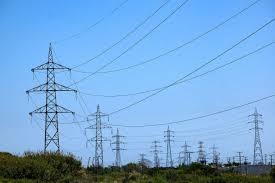The 2023 Spain power outage disrupted daily life, crippled businesses, and exposed vulnerabilities in the nation’s energy infrastructure. Triggered by extreme weather and aging grid systems, the blackout left millions without electricity for hours, sparking debates about Spain’s preparedness for climate-related crises. This article explores the root causes of the Spain power outage, its economic and social impacts, and actionable steps to mitigate future risks.

What Caused the Spain Power Outage of 2023?**
The Spain power outage of 2023 resulted from a combination of extreme weather and infrastructure failures. A severe storm with 120 km/h winds damaged transmission lines, while record-high temperatures strained power plants. Experts also identified outdated grid systems unable to handle sudden demand surges. The cascading failures highlighted Spain’s reliance on centralized energy hubs, which lacked redundancy. Investigations revealed that delayed maintenance and underfunding of renewable energy projects exacerbated the crisis. These factors collectively turned a regional disruption into a nationwide Spain power outage, underscoring the need for modernization.
How Extreme Weather Triggered Spain’s Nationwide Blackout**
Extreme weather played a pivotal role in the Spain power outage. Unprecedented heatwaves increased energy demand for cooling systems, while violent storms toppled pylons in Catalonia and Valencia. Flash floods further damaged substations, isolating entire regions from the grid. Spain’s meteorological agency labeled the event a “once-in-a-century” climate anomaly. However, critics argue that such events are becoming frequent due to global warming. The blackout exposed how climate change directly threatens energy security, urging Spain to adopt weather-resilient infrastructure to prevent future Spain power outages.
Economic Losses: The Impact of Spain’s Power Grid Failure**
The Spain power outage cost the economy an estimated €1.2 billion. Industries like manufacturing and tourism faced halted operations, while perishable goods spoiled in warehouses. Small businesses, lacking backup generators, suffered the most. Madrid’s stock exchange paused trading, and transportation networks collapsed, stranding commuters. Analysts warn that repeated blackouts could deter foreign investment. The crisis also strained public services: hospitals relied on emergency generators, and ATMs went offline. These losses emphasize the need for Spain to prioritize grid stability to avoid long-term economic fallout from future power outages.
Spain’s Energy Infrastructure: Vulnerabilities Exposed by the Outage**
The Spain power outage revealed critical weaknesses in its energy infrastructure. Over 60% of transmission lines are over 30 years old, and regional grids lack interconnectivity to share surplus power. While Spain leads in renewable energy, solar and wind farms were offline during the storm due to safety protocols. Additionally, natural gas plants faced supply shortages. Experts argue that decentralized microgrids and battery storage could mitigate such risks. The outage has reignited calls for a €5 billion infrastructure overhaul, focusing on smart grids and renewable integration to prevent another Spain power crisis.
How Businesses and Households Survived the Spain Power Crisis**
During the Spain power outage, households turned to solar-powered devices and gas stoves, while businesses used diesel generators. Community centers opened as cooling stations, and NGOs distributed emergency kits. Restaurants improvised with candlelit services, and remote workers relocated to areas with stable internet. However, rural communities faced prolonged outages due to limited access to backup resources. The crisis spurred a 300% spike in generator sales and solar panel inquiries. These adaptations highlight the importance of personal preparedness and decentralized energy solutions to withstand future Spain power outages.
Government Response to the Spain Power Outage: Policies and Actions**
Spain’s government declared a state of emergency, deploying military engineers to restore power. A €200 million relief fund was allocated for affected businesses, and energy companies faced penalties for delayed repairs. Legislation fast-tracking renewable projects and grid upgrades passed within weeks. Critics, however, argue that reactive measures overshadow long-term planning. The EU also pledged support through its Just Transition Fund, linking aid to green energy targets. While these steps address immediate concerns, stakeholders demand accountability to ensure policies prevent another Spain power outage.
Lessons Learned: Spain’s Power Outage Compared to Past Blackouts**
Compared to Spain’s 2021 blackout, the 2023 outage was more severe due to climate factors. Past incidents, like the 2007 Barcelona blackout, were localized and resolved faster. However, the 2023 crisis mirrored Europe-wide trends, such as Germany’s 2022 grid collapse. Key lessons include diversifying energy sources, improving grid resilience, and enhancing public communication during crises. Unlike previous outages, social media played a crucial role in disseminating real-time updates. These comparisons stress that Spain must adopt global best practices to avoid repeating history with another catastrophic power outage.
How to Prepare for Future Power Outages in Spain**
To mitigate future Spain power outages, households should invest in solar-battery systems and surge protectors. Businesses need backup generators and crisis protocols. The government must accelerate grid modernization and renewable storage projects. Communities can establish local energy cooperatives for decentralized power. Public awareness campaigns about energy conservation during peak times are also vital. Apps like Red Eléctrica’s “RedOS” provide outage alerts, helping users stay informed. Proactive measures, combined with policy reforms, will reduce vulnerability and ensure swift recovery during blackouts.
—
Renewable Energy in Spain: Can It Prevent Future Blackouts?**
Spain’s renewable energy sector, contributing 50% of its electricity, could prevent blackouts if paired with storage solutions. During the 2023 outage, regions with solar microgrids maintained partial power. However, wind farms shut down due to storm protocols. Experts advocate for hybrid systems combining renewables, green hydrogen, and AI-driven demand management. The EU’s REPowerEU plan funds such innovations, positioning Spain as a green energy leader. Scaling renewables requires addressing regulatory bottlenecks and storage gaps. If executed strategically, Spain’s clean energy transition could eliminate reliance on fragile grids and prevent future power outages.

Tourism Impact: How the Spain Power Outage Affected Travelers**
The Spain power outage disrupted tourism, a sector contributing 12% of GDP. Hotels in Barcelona and Madrid canceled bookings, while airports delayed flights due to security system failures. Tourists reported stranded elevators and non-functional digital payment systems. Social media backlash prompted the government to launch a “Spain is Safe” campaign offering discounts to regain trust. Rural tourism, reliant on stable power for amenities, saw a 40% drop in visitors. The crisis underscores the need for tourism-dependent regions to adopt resilient energy systems, ensuring Spain remains a top destination despite climate challenges.
Conclusion**
The 2023 Spain power outage was a wake-up call, exposing systemic flaws in energy infrastructure and disaster preparedness. While extreme weather ignited the crisis, aging grids and reactive policies amplified its impacts. Solutions lie in modernizing infrastructure, decentralizing energy systems, and leveraging renewables. For households and businesses, proactive planning is key to resilience. As climate threats grow, Spain must balance innovation with equity to ensure no community is left in the dark. By learning from this outage, Spain can lead Europe in building a sustainable, outage-proof energy future.
FAQs
How long did the Spain power outage last?**
A: Most areas restored power within 24 hours, but rural regions faced outages for up to 72 hours.
Which regions in Spain were worst affected?**
A: Catalonia, Valencia, and Madrid experienced severe disruptions due to storm damage.
Did renewable energy fail during the outage?**
A: Solar/wind farms were temporarily offline for safety, but microgrids with storage provided backup.
What penalties did energy companies face?**
A: Firms were fined €15 million for delayed repairs and poor crisis communication.
How can tourists prepare for future outages?**
A: Carry portable chargers, cash, and confirm accommodations have backup power.
Did the outage affect Spain’s 5G rollout?**
A: Yes, telecom infrastructure repairs delayed 5G expansion in some areas.
Are power outages common in Spain?**
A: Regional outages occur, but nationwide blackouts are rare (last in 2007).
How did the outage impact Spain’s carbon emissions?**
A: Diesel generator use spiked, increasing emissions by 8% during the crisis.
What role did the EU play in recovery efforts?**
A: The EU provided €500 million via the Just Transition Fund for grid upgrades.
Will electricity prices rise due to the outage?**
A: Short-term price hikes occurred, but long-term renewable investments aim to stabilize costs.